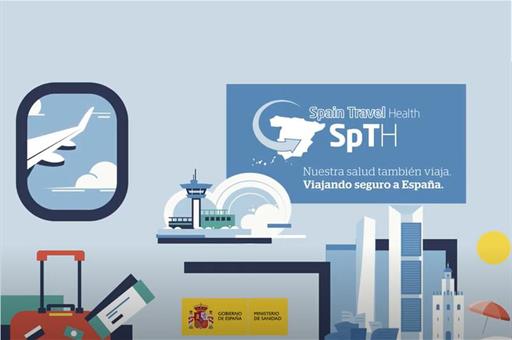Passenger health check forms to go digital so people can get through airports faster
News - 2020.7.3
The passenger health check form (known as the Passenger Location Card or PLC) went digital from 1 July in order to speed up passenger transit through airports, something that is expected to increase over the coming weeks with the start of the summer holiday season.
This document was already being used during the State of Emergency for people who were able to enter Spain. It includes information on the person's location, as well as on whether they have recovered from COVID-19 and under what circumstances. Until now, these forms were filled in on the plane and hand delivered by the passenger upon arrival.
Now it will be possible to fill in the passenger health check forms on the website at www.spth.gob.es or by downloading the Spain Travel Health-SpTH app. It is already available on the website and for Android devices and will soon be made available for Apple devices.
The option to fill in a hard copy of the form will be maintained for those without the means to use the online version.
This form is one of the three initial checks on people arriving in Spain. Temperature checks will continue to be performed as they have been since 15 May. This is done using thermographic cameras to facilitate a smooth flow of people through airports.
Finally, a visual inspection is conducted by officers from the Overseas Health Department. These inspections seek to identify any passengers who may be suspected of suffering from COVID-19 or any other transmissible disease.
If someone fails any one of these three checks, a doctor examines the individual in question and hands them over to the regional healthcare services at the destination.
Since 1 July, there has also been a significant increase in the number of officers on duty at all airports in Spain: 650 officers have joined the 600 who were already working for the Overseas Health Department. Based on circumstances over the coming weeks, more doctors, nurses and assistants will be hired for these passenger arrival control checks.
This staffing increase follows one carried out on 21 June, when internal EU and Schengen Area borders were re-opened. Overseas Health Department staff were bolstered by an initial contingent of 100 people from ancillary companies and others that provide services at seaports and airports under an agreement with the Ministry of Transport, Mobility and the Urban Agenda.
EU agreement
Spain has been working alongside the European Union on increasing the list of non-EU countries from which people can enter Spain after the re-opening of EU and Schengen Area borders on 21 June.
The safety of both people arriving in Spain and the citizens of this country is guaranteed at all times. The decision on the list of non-EU countries with which to re-open borders has been based on epidemiological criteria. The situation in those countries will need to be the same or better than in EU Member States.





